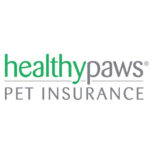Best Pet Insurance For Old English Sheepdogs In 2026
My informed take is that Healthy Paws is the most fitting option for pet insurance tailored to Old English Sheepdogs.
We’ve saved shoppers an average of $350 per year on their pet insurance.
It’s shocking that 80% of pet owners are financially unprepared for a sudden $500 vet expense. That’s where pet insurance steps in, providing essential financial relief.
In this guide, we’ll explore the leading pet insurance providers for Old English Sheepdogs, helping you choose the policy that best fits your needs. Like personal health coverage, pet insurance helps ensure better care while keeping costs manageable.
Best Pet Insurance Companies For Old English Sheepdogs 2026
Several pet insurance companies that cater to Old English Sheepdogs prioritize your pet's health and offer financial support, though they differ in their services. What works for one pet may not be suitable for another. Here's a look at some of the leading pet insurance options for Old English Sheepdogs:



Compare The Best Pet Insurance Companies For Old English Sheepdogs
After reviewing the top pet insurance options for Old English Sheepdogs, it's evident that several reputable companies are vying for the leading positions. Each company also has its own unique advantages. Here's a brief overview to give you a glimpse into each insurer.
| Overall Rating | Best For | Waiting Period | Reimbursement % | Benefit Limit | Get A Quote | |
|---|---|---|---|---|---|---|
| Healthy Paws |
|
Overall |
15 days accident/illness |
70%,80%,90% |
Unlimited annual and lifetime |
Instant Quote |
| Lemonade |
|
Cheap |
2 days accidents, 14 illness |
70%,80%,90% |
$5,000 to $100,000 annually |
Instant Quote |
| ManyPets |
|
Puppies |
15 days accident/illness |
70% or 80% (most states) |
Unlimited annual and lifetime |
Instant Quote |
| Pumpkin |
|
Older Dogs |
14 days accident/illness |
90% |
$10,000, $20,000, or unlimited |
Instant Quote |
| Spot |
|
Multiple Pets |
14 days accident/illness |
70%,80%,90% |
$2,500 to unlimited |
Instant Quote |
Our Methodology
The assessments and resulting ratings were established through a review of insurer websites, analysis of customer reviews, consultation of other review platforms, and personal experiences with pet insurance.
Quotes Analyzed
Years Of Experience
Brands Reviewed
Research Hours
Detailed Reviews Of The Best Old English Sheepdog Insurance Companies
Best Overall
Key Statistics
Why We Like Them
⇅Healthy Paws is the best choice for pet insurance because it doesn’t impose payout ceilings, per-incident caps, or restrictions. While it might be a larger investment, its value comes from eliminating tough choices driven by policy limits. The policy is simple, without unnecessary add-ons, and gives you the freedom to visit any licensed vet. Filing claims is straightforward via their app or website, with most claims resolved within two days.
Benefits & Drawbacks
⇅- Endless annual and lifetime reimbursements
- Quick processing for the majority of claims in under 48 hours.
- Enjoy a 30-day money-back offer
- Feasibility of direct compensation to veterinarians. ✓
- Lack of customary wellness coverage choice ✘
Runner-Up for Best Overall
Key Statistics
Why We Like Them
⇅Lemonade is the most affordable pet insurance for Old English Sheepdogs, offering coverage limits that are similar to other companies but not as extensive as Healthy Paws’ unlimited option. Lemonade provides coverage from $5,000 to $100,000 annually, with premiums that rise along with the coverage amount. The standard policy covers accidents and illnesses such as cancer, heart disease, skin problems, fractures, and hip dysplasia, which is common in older Old English Sheepdogs. However, it does not cover preexisting conditions, dental issues, behavioral concerns, or elective surgeries.
Benefits & Drawbacks
⇅- Participate in a wellness opportunity that's provided.
- Begin benefiting from coverage after a two-day waiting period post-accident.
- Bundle your Lemonade home, renters, or car insurance with pet insurance for a 10% discount. ✓
- A pet telehealth service that isn't available 24/7.
- Vet visit fees come with an additional charge.
- Prescription food and microchipping are not covered according to the policy, I'm sorry. ✘
Best for Puppies
Key Statistics
Why We Like Them
⇅ManyPets offers the best insurance for puppies, with rates unaffected by pre-existing conditions. Conditions that have healed may be covered after 18 months, and unrelated ones can still qualify. Old English Sheepdog puppies are at risk for accidents, poisoning, and swallowing foreign objects due to their energetic nature. Getting coverage early can help prevent future exclusions for pre-existing conditions.
Benefits & Drawbacks
⇅- Accessible across a substantial number of states, more than 40 in total.
- Provides a selection of wellness options.
- Comprises charges for vet appointments, addressing both illness and accidents. ✓
- A round-the-clock pet telehealth option is absent.
- Therapy for correcting pet behavior is not covered.
- Regrettably, alternative therapies do not fall under the covered services. ✘
Best for Older Dogs
Key Statistics
Why We Like Them
⇅Aging Old English Sheepdogs are prone to genetic conditions like cruciate ligament tears and hip dysplasia, which can lead to expensive treatments. Pumpkin provides immediate coverage for these issues and includes vet exam fees for senior Old English Sheepdogs. They offer a variety of coverage options, including surgeries and dental care. With three deductible levels to choose from, Pumpkin generally reimburses 90% of the costs.
Benefits & Drawbacks
⇅- Decide to enroll in a health and wellness plan that's available.
- Receive discounted pet insurance rates for multiple pets.
- Enjoy a substantial 90% reimbursement for dogs and cats over the age of 8 weeks. ✓
- We regret to inform you that there is no 24/7 pet telehealth assistance available.
- An accident-only plan isn't part of the choices available, we're sorry. ✘
Best for Multiple Pets
Key Statistics
Why We Like Them
⇅Due to the social nature of Old English Sheepdogs, many owners have multiple pets. Spot acknowledges this by giving a 10% discount for insuring more than one pet, helping you save a lot. Their preventive care plan covers wellness needs like annual vet visits, fecal tests, teeth cleanings, and certain vaccinations. Spot also guarantees a 30-day money-back policy if you’re unhappy with the service. They offer up to 90% reimbursement on eligible vet bills and a 24/7 helpline. You can visit any licensed vet or specialist in the U.S.
Benefits & Drawbacks
⇅- Provides microchip integration solutions.
- Allows you to choose a $100 deductible amount.
- Features a pet telehealth hotline that's accessible day and night. ✓
- In the event of accidents, there's a 14-day waiting period, whereas some leading competitors offer just a 2-day wait. ✘
Average cost of pet insurance for Old English Sheepdogs
| Company | Deductible | Annual Reimbursement % | Monthly Price | Age of Dog |
| Healthy Paws | $500 | 70% | $69 | 5 year old |
| Lemonade | $500 | 70% | $39 | 5 year old |
| Spot | $500 | 70% | $72 | 5 year old |
| Healthy Paws | $500 | 80% | $35 | 1 year old |
| Lemonade | $500 | 80% | $19 | 1 year old |
| Spot | $500 | 80% | $52 | 1 year old |
| Healthy Paws | $500 | 70% | $36 | 3 month old |
| Lemonade | $500 | 70% | $28 | 3 month old |
| Spot | $500 | 70% | $82 | 3 month old |
Average cost of typical vet procedures
| Typical Vet Procedure | Average Cost Of Procedure |
| Puppy vaccinations | $75-100 |
| Flea & tick prevention | $40-200 |
| Heartworm prevention | $24-120 |
| Spay or neuter surgery | $200-800 |
| Annual exam | $240-600 |
| Teeth cleaning | $200-500 |
| Microchip | $40 |
Average cost of emergency vet procedures
| Emergency Pet Procedure | Average Cost Of Procedure |
| General consultation/exam | $100-$150 |
| General bloodwork | $80-200 |
| X-rays | $150-$250 |
| Ultrasound | $300-$600 |
| 1-2 day hospitalization | $600-$1,700 |
| 3-5 day hospitalization | $1,500-$3,500 |
| Wound treatment & repair | $800-$1,500 |
| Emergency surgery | $800-$2,500 |
| Oxygen therapy | $500 |
Is pet insurance worth it for Old English Sheepdogs?
Pet insurance offers a protective layer against unexpected veterinary expenses. While many pet owners can cover their pets’ medical bills, a significant number of Americans struggle with a $1,500 emergency vet cost. The right pet insurance acts as a safety net, empowering you to prioritize your furry friend’s health without financial stress.
The value of pet insurance is subjective and depends on your expectations. If your pet has a chronic condition and you’re looking for help with treatment costs, you might be let down, as no companies in our review cover pre-existing conditions. However, if you understand your policy and how it fits within your budget and needs, you’re more likely to view it as a valuable investment.
How to find the best pet insurance company for you
Selecting the right pet insurance can be complicated due to the differences in costs and options offered by various companies. To help you find the best plan for your pet, keep these essential guidelines in mind before making your final choice:
Check whether your pet is eligible
To secure insurance, young puppies and kittens usually need to be at least 6 to 10 weeks old, depending on the company. Some providers may restrict initial enrollment for senior pets or offer only accident coverage. However, once your pet is enrolled, most plans provide lifelong coverage as long as you maintain your premium payments.
Research what’s covered
Most pet insurance plans cover expenses such as surgeries, hospital stays, and medications for sick or injured pets. However, there are certain things that some companies might charge extra for or not cover at all. Here are a few examples:
- Exam fees: For instance, if your dog breaks a leg, while some plans might pay for X-rays, surgery, and pain medications, they might not cover the veterinarian’s exam fee.
- Alternative treatments and rehab: Some plans include alternative treatments like acupuncture and physical therapy, while others might require an additional charge.
- Behavioral therapies: Many plans do not cover treatments for behavioral issues like aggression.
- Prescription food: Certain plans might exclude food or supplements, even if prescribed by the vet for a covered condition.
- Dental care: Pet insurance varies in its approach to dental care. Some might not cover conditions like gum disease or tooth problems. In some cases, coverage might depend on recent teeth cleanings. Some wellness add-ons may pay for cleanings. Remember, pet insurance usually doesn’t cover pre-existing conditions, cosmetic procedures, or breeding costs.
Decide How Much Coverage You Want
Many pet insurance policies have a maximum annual payout, but some provide unlimited coverage options. It’s important for you to choose a coverage amount that makes you feel secure about handling vet expenses. If your dog or cat is healthy, you may go years without having to pay anything beyond routine checkups. However, unexpected surgeries or significant illnesses can result in veterinary costs that can reach into the thousands.
Understand reimbursements and deductibles
In pet insurance, most plans reimburse a portion of your veterinary costs. When you choose a policy, you typically select a reimbursement level, such as 70%, 80%, or 90%. Conversely, some plans may only cover specific treatments at a fixed rate, which could be less than your vet charges, meaning you’ll have to cover the remaining amount.
Almost all plans also include a deductible, which is what you pay upfront before coverage begins. You generally have a choice among different deductibles, like $100 or $250. Some plans apply the deductible to each condition, while most only require it to be paid once a year. Typically, opting for a lower deductible and higher reimbursement results in higher premiums, whereas a higher deductible with lower reimbursement leads to lower premiums.
Check waiting periods
Insurance plans generally impose a brief waiting period after purchase, typically around 14 days, before providing comprehensive coverage for accidents and illnesses. During this period, treatments are not covered. Longer waiting periods may be required for specific conditions like cruciate ligament injuries, which can affect a dog’s knee stability and mobility.
Examine extra costs
Several pet insurance providers offer coverage for regular services like check-ups and vaccinations. While this might sound appealing, it’s important to consider if the added cost is really worth it. Compare the yearly cost of the wellness insurance plan to what you typically spend for those services each year. Make sure to carefully review the specifics, as definitions of “wellness” may vary among pet insurance providers.
Compare Quotes
Pet insurance prices vary depending on the provider and the coverage level chosen. Certain insurers offer discounts for insuring multiple pets, potentially reducing costs. However, discounts alone don’t guarantee the best plan. To find the most appropriate pet insurance, research and compare quotes from different plans. Be sure to conduct an impartial comparison, considering coverage levels, deductibles, and reimbursement limits.
Common health issues for Old English Sheepdogs
Purebred Old English Sheepdogs often face health challenges linked to genetics. In some cases, breeders may have ignored these concerns, which has led to health issues becoming more common in the Old English Sheepdog breed. Old English Sheepdogs are generally more prone to genetic problems than other breeds. Below are some of the most frequent health concerns in Old English Sheepdogs:
- Cancer (Oral Melanoma, Mast Cell Tumors)
- Brachycephalic Obstructive Airway Syndrome (BOAS)
- Patellar Luxation
- Hip Dysplasia, Legg-Calvé-Perthes Disease
- Corneal Ulcers, Entropion, Dry Eye
- Skin Fold Dermatitis, Infections
Factors that impact cost of your pet insurance policy
The cost of pet insurance can vary significantly, much like health insurance, based on certain factors, including:
- Location: Pet insurance providers consider local veterinary expenses when setting your policy’s price.
- Pet’s Age: Older pets tend to be more prone to health problems, which can lead to higher premiums.
- Pet’s Breed: Some breeds are more likely to have health issues. For instance, bulldogs and Boston terriers often deal with respiratory difficulties, while larger breeds like Pugs are more susceptible to hip dysplasia. These breed-specific concerns can impact the cost of your insurance.
- Deductibles, Coinsurance, and Coverage Limits: If you prefer to minimize out-of-pocket expenses for your pet’s care, you may end up paying higher premiums. For example, a lower deductible of $100 compared to $500 means you’ll get reimbursed faster, but you’ll also pay more in premiums.
FAQs
Is pet insurance cheaper for purebred dogs?
Purebred dogs’ genetic vulnerabilities often lead to costly health issues, resulting in higher insurance costs compared to mixed-breed dogs.
What is the average cost of owning a Old English Sheepdog?
Initially, the expenses in the first year come to roughly $3,000, encompassing vaccinations, food, grooming, and insurance. Following that, annual costs decrease to approximately $1,900.
What insurance do you need for a dog?
Dog owners are advised to have pet insurance to handle veterinary costs and ensure their dogs’ well-being.
Sources
⇅